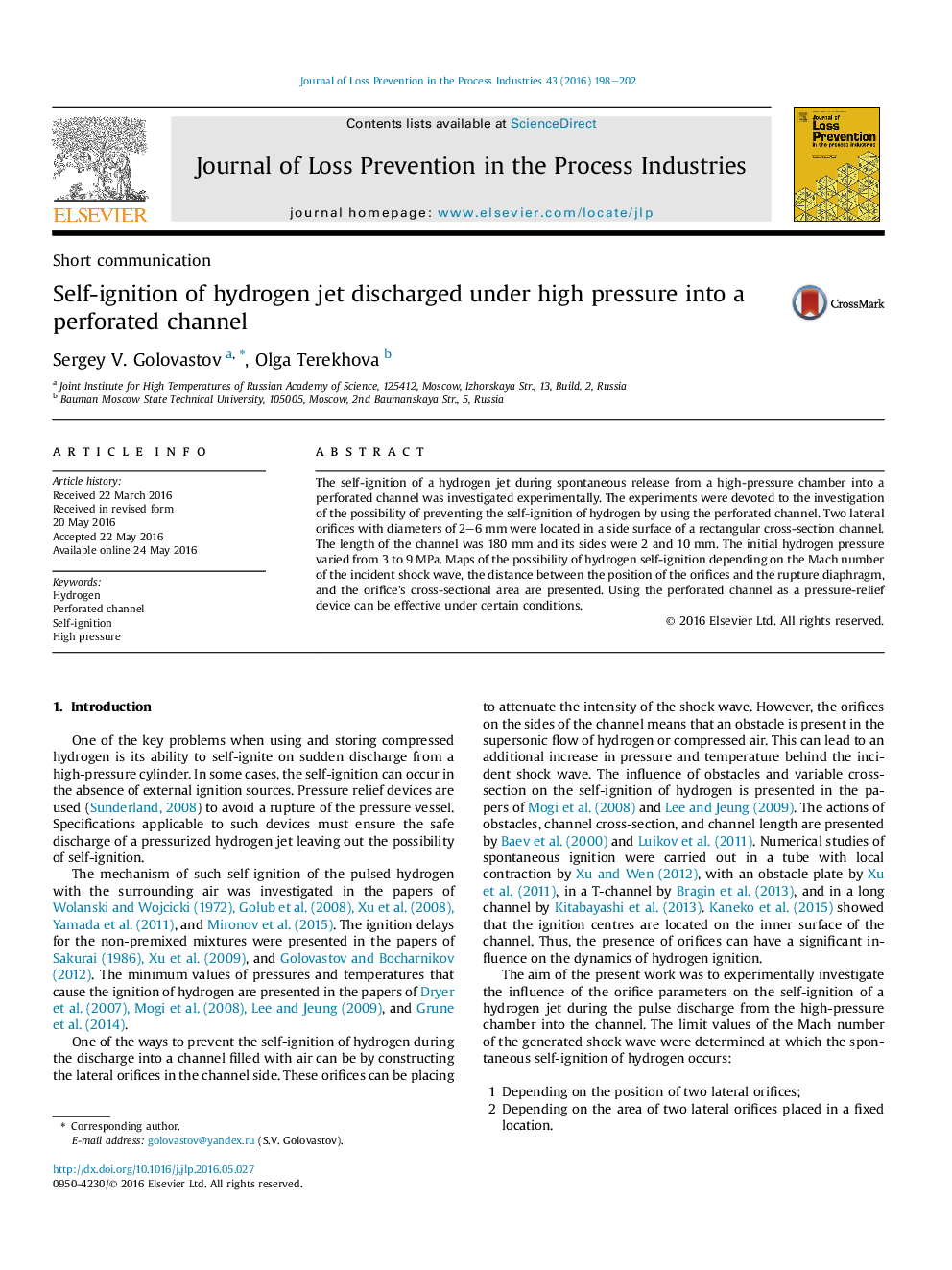| Article ID | Journal | Published Year | Pages | File Type |
|---|---|---|---|---|
| 585939 | Journal of Loss Prevention in the Process Industries | 2016 | 5 Pages |
The self-ignition of a hydrogen jet during spontaneous release from a high-pressure chamber into a perforated channel was investigated experimentally. The experiments were devoted to the investigation of the possibility of preventing the self-ignition of hydrogen by using the perforated channel. Two lateral orifices with diameters of 2–6 mm were located in a side surface of a rectangular cross-section channel. The length of the channel was 180 mm and its sides were 2 and 10 mm. The initial hydrogen pressure varied from 3 to 9 MPa. Maps of the possibility of hydrogen self-ignition depending on the Mach number of the incident shock wave, the distance between the position of the orifices and the rupture diaphragm, and the orifice’s cross-sectional area are presented. Using the perforated channel as a pressure-relief device can be effective under certain conditions.
